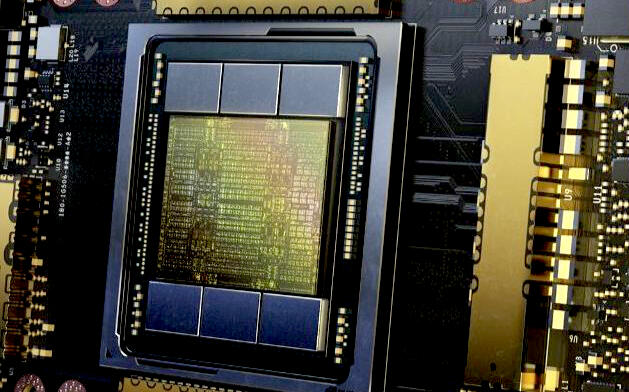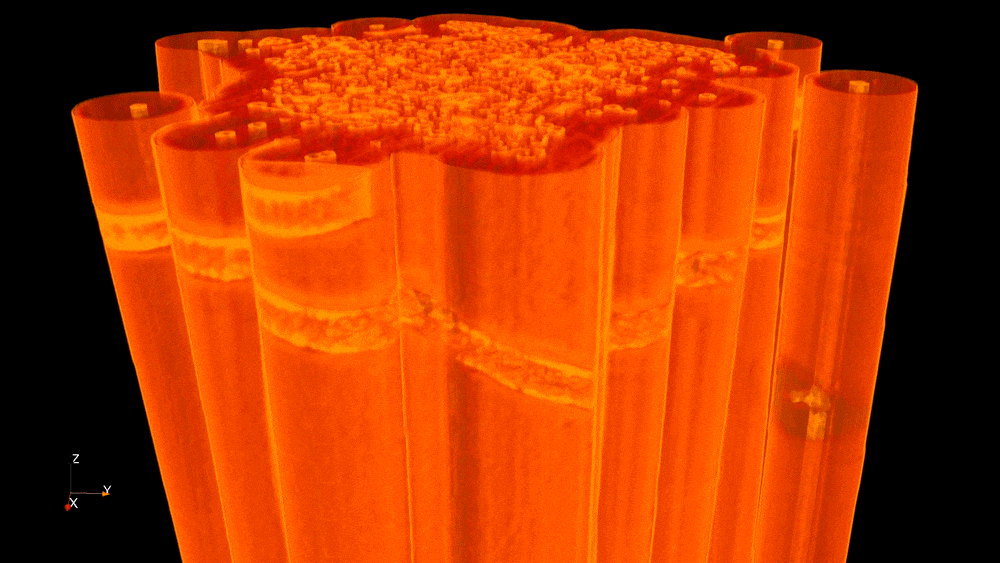// Science Accelerated
Introducing Perlmutter
Perlmutter: High Performance Computing Optimized for Science
Perlmutter is the latest in a long line of supercomputers at the National Energy Research Scientific Computing Center (NERSC) at Berkeley Lab. The center got its start 50 years ago with one cast-off supercomputer supporting one field of study. Today NERSC supports about 1,000 different teams performing research in fields like climate change and environmental remediation, materials discovery for energy applications, fusion energy, particle physics, cosmology, and bioenergy.NERSC’s scientific impact is reflected in some 2,000 acknowledgments in refereed scientific journal publications each year.
Perlmutter introduces a new generation of supercomputing capability to more than 8,000 scientists performing research for the U.S. Department of Energy Office of Science. The HPE Cray system integrates leading-edge technologies with the latest NVIDIA A100 GPUs, AMD "Milan" EPYC CPUs, a novel HPE Slingshot high-speed network, and a 35 petabyte – all FLASH – scratch file system.*Perlmutter *is designed to meet the emerging simulation, data analytics, and artificial intelligence requirements of the scientific community.
Following its tradition of naming systems after scientists, Perlmutter honors the work of Berkeley Lab physicist and Nobel Laureate Saul Perlmutter. Dr. Perlmutter led a team whose work at NERSC contributed to a Nobel prize-winning insight: The expansion of our universe is accelerating. The search to explain this acceleration has dimly revealed a universe dominated by enigmatic "dark energy." Perlmutter was built, outfitted, and launches as a vessel of scientific discovery that will explore the dark universe and beyond.
Acclerated Insights
Calculations on Perlmutter are accelerated by Graphical Processing Units, or GPUs. GPUs provide a lot of computational power using relatively less energy compared to traditional CPUs. But they require special programming techniques to use, and GPUs are new to many NERSC users. The NERSC Exascale Scientific Application Program (NESAP) was designed specifically to help application teams address this issue. For more than two years NESAP has been working with key scientific codes, many of which are now ready to fully exploit the computational power of Perlmutter.


Made for Machine Learning
Researchers are increasingly turning to artificial intelligence techniques like deep learning to get results that are otherwise practically impossible. Perlmutter’s NVIDIA A100 GPUs with tensor cores were designed with deep learning in mind. Perlmutter’s 35 Petabyte solid state file system can feed data to the processors at 5 Terabytes per second and a fast, intelligent internal network routes that data where it needs to go quickly and effectively. Perlmutter’s software stack is optimized for learning and includes industry standard frameworks.
Superfacility Ready
The Superfacility concept pioneered by NERSC and the Energy Sciences Network couples computing, networking, software, and expertise with experimental instruments like telescopes, light sources, and particle colliders. The idea is to bring real-time data analysis and feedback into experiments as they happen, rather than transferring and analyzing the data after the experiment, then adjusting the experiment at a later time. Perlmutter's communications networks can route information directly to and from the processor, which will help make the real-time analysis goals of the Superfacility a reality.

Top Performance for Simulation Science Breakthroughs
NERSC's users are at the forefront of research that employs large scale computer simulations to help unravel the mysteries of science and develop clean energy solutions for a variety of applications. The computational power of Perlmutter, combined with the work of the NERSC Exascale Scientific Application Program (NESAP), have scientists poised to make breakthroughs in chemistry, materials science, particle physics, fusion energy, accelerator design, and many other fields.
Energy Efficiency
The Perlmutter system and the facility in Shyh Wang Hall at Berkeley Lab are designed to deliver world-class computational capability with energy efficiency in mind. Perlmutter's GPUs are significantly more energy-efficient than CPUs for compute-intensive tasks and the system's direct liquid cooling "bathes" components in coolant for more energy savings. The facility's "free cooling" technique, which requires only water cooling towers and no energy-hungry mechanical chillers, help bring the NERSC facility's Power Usage Effectiveness (PUE) down to 1.05-1.08, among the best in the world.

Data Analysis Done Here
Whether researchers are generating results from massive climate simulations or crunching data from particle accelerators, astronomical sky surveys, or DNA sequencers, data analysis is key to the scientific enterprise. Supercomputers have always excelled at performing massively parallel scientific calculations, but they have sometimes struggled when attempting to analyze large, complex data sets. Perlmutter is designed to help change that. With its large all-FLASH file system, advanced networking features, and optimized data analytics software stack, Perlmutter provides the resources that researchers need to attack the largest data analysis challenges.
Take a Closer Look
Did we pique your curiosity? Learn more:
◦ Perlmutter: System Overview
◦ NESAP: NERSC Exascale Science Application Program
◦ NERSC Played Key Role in Nobel Laureates Discovery
◦ Discovery of Dark Energy Ushered in a New Era of Computational Cosmology
NERSC is a U.S. Department of Energy (DOE) Office of Science National User Facility at Lawrence Berkeley National Laboratory (Berkeley Lab). The University of California operates Berkeley Lab.


